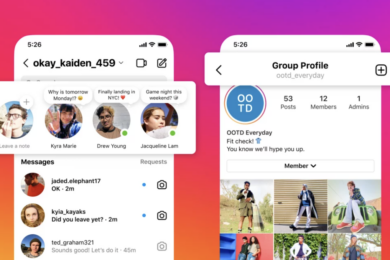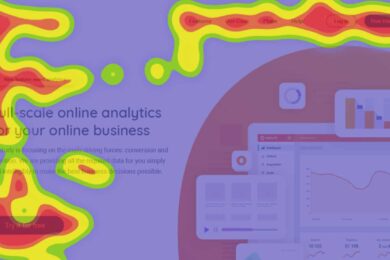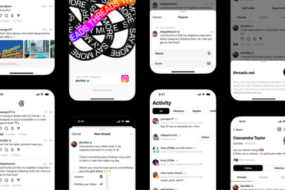
Introduction
Influencer marketing is an effective tool for growing your brand’s reach and increasing engagement. However, there are many nuances to this strategy that you should understand before diving in. In this post, we’ll cover what influencer marketing is and how it works. We’ll also go over the benefits of working with micro-influencers over macro-influencers and how to find an influencer who matches your brand’s needs. Finally, we’ll discuss some helpful tips for increasing the reach of your content through influencer marketing campaigns!
What is Influencer Marketing?
Influencer marketing is a form of marketing that uses social media influencers to market a product or service. Influencers are people who have a significant following on social media, such as celebrities and athletes. Influencer marketing can be used to advertise products and services, build brand awareness, and increase sales.
Benefits of Influencer Marketing
- Increased brand awareness. When you work with influencers, you’re reaching a new audience that may not be familiar with your products or services. Influencer marketing is one of the best ways to reach this audience.
- Increased brand loyalty. The more consumers interact with your brand through influencers and social media, the stronger their loyalty will be to that particular product or service. That’s because they feel more engaged and involved in what your company offers, which creates trust among audiences who are already familiar with the influencer’s work as well as those who aren’t yet familiar but might become so after seeing them collaborate on something they love!
- Increased sales/traffic/conversions etc… In general when there’s money involved in any type of business venture it tends towards better performance than those without financial incentives (ehem.. like blogging). This means higher conversion rates from traffic generated through influencer marketing efforts compared to other types of marketing strategies such as email campaigns or paid advertising on search engines like Google Adwords where there aren’t any direct monetary incentives for visitors coming through which may lead some visitors away from completing purchases because they’re unsure whether or not it’s worth spending money just yet (if ever).
Micro-Influencers vs. Macro-Influencers
- Micro-influencers are people who have a small (but active) following. They typically have a smaller online presence, but their followers are highly engaged and loyal, making them an ideal choice for your marketing campaign.
- Macro-influencers are influencers with a large following that is considered ‘mass appeal’. These individuals typically have a moderate number of followers on all social media platforms, which makes them more accessible to brands looking to partner with someone who can reach many people at once.
So now that you know the difference between micro and macro influencers, let’s go over how you can find them:
Social Media Engagement
The term “engagement” can be a bit ambiguous. In the context of influencer marketing, engagement is the number of times a user interacts with your content. This includes likes and comments, but also shares on social media platforms such as Facebook and Twitter.
Engaging with influencer content helps build trust with your audience and ensures that you are getting maximum exposure to their followers.
How to Find an Influencer
Influencer marketing is a great way to get your brand out there and increase awareness. But where do you begin?
While there are no set rules for finding the right influencer, here are a few tips that can help:
- Use an influencer marketing platform like Webloyalty to find relevant influencers with active audiences.
- Be sure you’re looking at the right platforms; if your product is best suited for Instagram and your campaign goal is to drive traffic to a website, don’t use someone who doesn’t post as much on Instagram (or any other social media) as they do elsewhere!
Content Creation and Platforms for Influencers
Influencer content creation is a broad topic. The most popular types of influencer content are blog posts, video and photos, but it also includes all other forms of online media, such as podcasts and even live-streams.
Influencers can share their own branded content on social media platforms like Facebook and Instagram. They can also publish their own blog posts, tutorials and other forms of written content on their websites or in forums that are closely related to the topics they cover (e.g., if they’re a fitness coach who specializes in weight loss).
Increasing the Reach of Your Brand with Influencer Marketing
The main goal of influencer marketing is to increase the reach of your brand and expand your customer base. Influencers can help you reach a wider audience, leading to more sales and brand awareness. In addition, they will also help you gain credibility in the eyes of consumers.
Influencer marketing is a great way for small businesses and startups to promote their products or services without spending too much money on advertising themselves. On the other hand, large corporations use it as a complementary tool for their existing marketing strategies in order to boost sales through word-of-mouth recommendations from trusted sources such as fellow customers or industry experts who are known by others due to their expertise in certain topics related with what they sell (e.g., food bloggers).
The next time you want your content to be seen by a larger audience, consider working with an influencer!
If you’re not sure what an influencer is, they are people who have a large following and can help promote your brand on their social media channels.
Influencers can get your content (blog posts or videos) in front of a larger audience than you would be able to reach with just the help of your own social media profile.
For example, if you have 100 followers on Twitter, but there are 5 influencers with 10k plus followers each who want to share your content with their audience, then suddenly you’ve got access to 500k people! It also increases the likelihood that these new viewers will convert into customers/followers because they trust the person recommending it.
Conclusion
Influencer marketing is one of the best ways to reach a large audience and increase your brand’s visibility. It’s an effective way to get your content in front of potential customers, and it helps build trust with people who are interested in what you have to offer but aren’t familiar with your company yet. Influencers can also help amplify your message by sharing it with their own followers through social media channels like Twitter and Instagram.


















